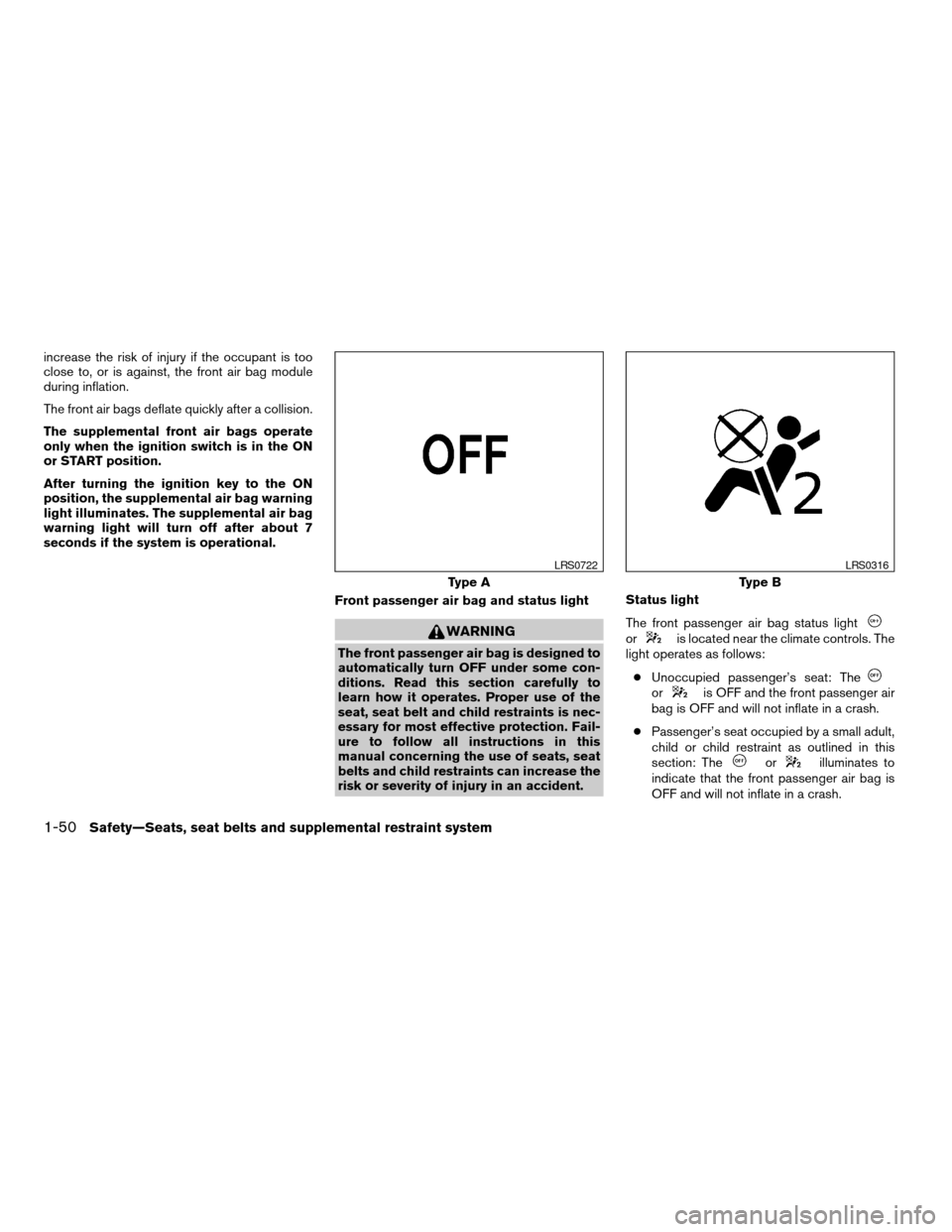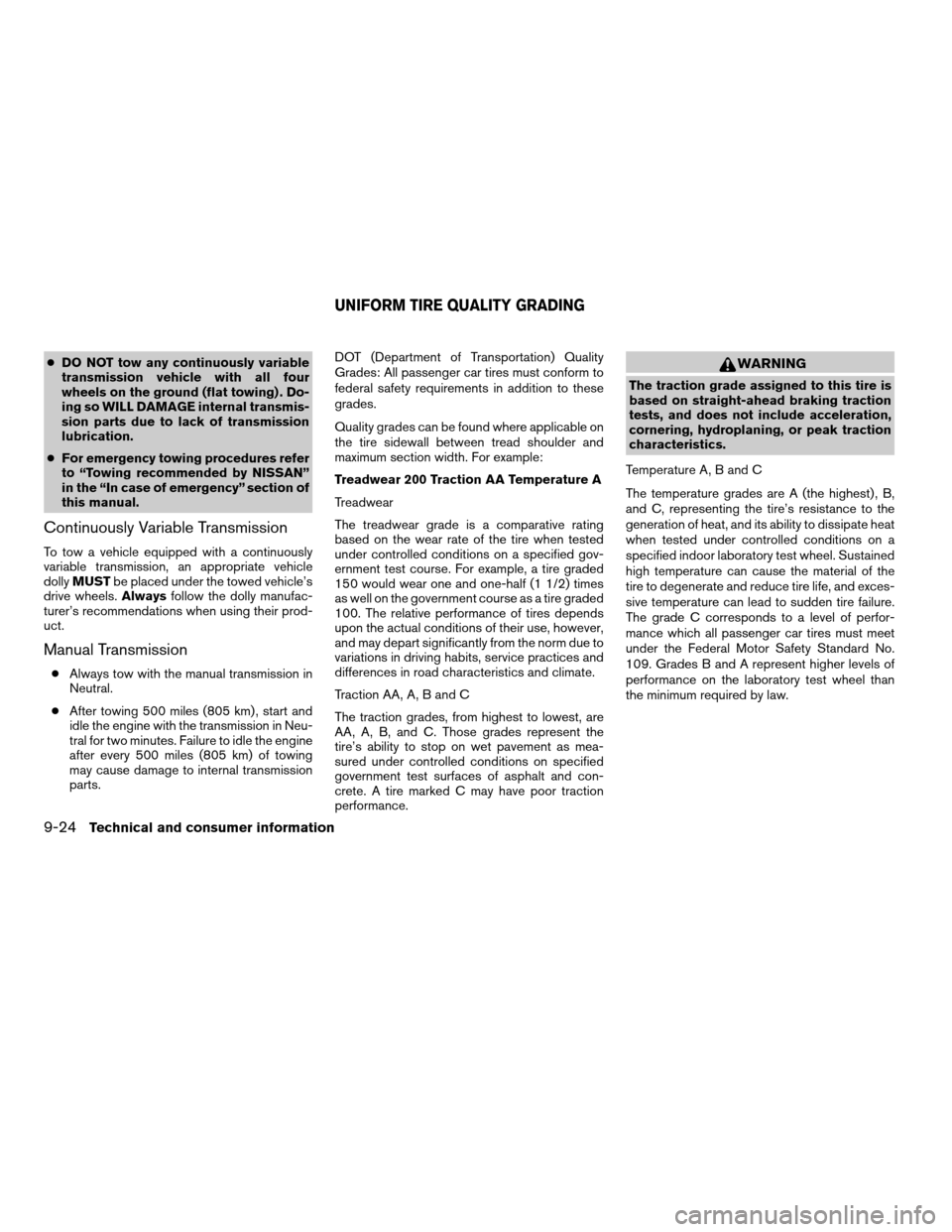2007 NISSAN SENTRA climate control
[x] Cancel search: climate controlPage 12 of 320

1. Headlight/fog light (if so equipped)/turn
signal switch (P. 2-19); Manual shift
paddles (if so equipped) (P.5-13 )
2. Steering wheel switch for audio control
and BluetoothTHands-Free Phone Sys-
tem (if so equipped) (P. 4-35, 4-37)3. Driver’s supplemental air bag/Horn
(P. 1-41, 2-22)
4. Meters and gauges (P. 2-3)
5. Instrument brightness control (P. 2-21)
6. Cruise control main/set switches (if so
equipped) (P. 5-19)7.
Windshield wiper/washer switch (P. 2-18)
8. Storage bin (if so equipped) (P. 2-23)
9. Audio system (P. 4-15)
10. Center ventilator (P. 4-6)
11. Passenger’s supplemental air bag
(P. 1-41)
12. Control panel display (if so equipped)
(P. 4-2)
13. Side ventilator (P. 4-6)
14. Engine oil pressure gauge
(if so equipped) (P. 2-6)
15. G-gauge (if so equipped) (P. 2-5)
16. Hazard warning flasher switch
(if so equipped) (P. 2-22)
17. Hazard warning flasher switch (if so
equipped) (P. 2-22); Manual shift mode
switch (if so equipped) (P.5-13 )
18. Glove box (P. 2-27)
19. Passenger air bag status light (P. 1-41)
20. Climate control (P. 4-7)
21. Shift selector lever (P. 5-11)
22. Power outlet (P. 2-23)
23. Ignition switch (P. 5-6)
24. Tilt steering (P.3-26)
25. Sunglasses holder (P. 2-25)
26. Hood release lever (P. 3-22)
See the page number indicated in paren-
theses for operating details.
WIC1115
INSTRUMENT PANEL
0-6Illustrated table of contents
ZREVIEW COPYÐ2007 Sentra(sen)
Owners ManualÐUSA_English(nna)
11/28/06Ðarosenma
X
Page 66 of 320

increase the risk of injury if the occupant is too
close to, or is against, the front air bag module
during inflation.
The front air bags deflate quickly after a collision.
The supplemental front air bags operate
only when the ignition switch is in the ON
or START position.
After turning the ignition key to the ON
position, the supplemental air bag warning
light illuminates. The supplemental air bag
warning light will turn off after about 7
seconds if the system is operational.
Front passenger air bag and status light
WARNING
The front passenger air bag is designed to
automatically turn OFF under some con-
ditions. Read this section carefully to
learn how it operates. Proper use of the
seat, seat belt and child restraints is nec-
essary for most effective protection. Fail-
ure to follow all instructions in this
manual concerning the use of seats, seat
belts and child restraints can increase the
risk or severity of injury in an accident.Status light
The front passenger air bag status lightoris located near the climate controls. The
light operates as follows:
cUnoccupied passenger’s seat: The
oris OFF and the front passenger air
bag is OFF and will not inflate in a crash.
cPassenger’s seat occupied by a small adult,
child or child restraint as outlined in this
section: The
orilluminates to
indicate that the front passenger air bag is
OFF and will not inflate in a crash.
Type A
LRS0722
Type B
LRS0316
1-50Safety—Seats, seat belts and supplemental restraint system
ZREVIEW COPYÐ2007 Sentra(sen)
Owners ManualÐUSA_English(nna)
11/27/06Ðarosenma
X
Page 76 of 320

1. Headlight/fog light (if so equipped)/turn
signal switch (P. 2-19); Manual shift
paddles (if so equipped) (P.5-13 )
2. Steering wheel switch for audio control
and BluetoothTHands-Free Phone Sys-
tem (if so equipped) (P. 4-35, 4-37)3. Driver’s supplemental air bag/Horn
(P. 1-41, 2-22)
4. Meters and gauges (P. 2-3)
5. Instrument brightness control (P. 2-21)
6. Cruise control main/set switches
(if so equipped) (P. 5-19)7.
Windshield wiper/washer switch (P. 2-18)
8. Storage bin (if so equipped) (P. 2-23)
9. Audio system (P. 4-15)
10. Center ventilator (P. 4-6)
11. Passenger’s supplemental air bag
(P. 1-41)
12. Control panel display (if so equipped)
(P. 4-2)
13. Side ventilator (P. 4-6)
14. Engine oil pressure gauge
(if so equipped) (P. 2-6)
15. G-gauge (if so equipped) (P. 2-5)
16. Hazard warning flasher switch
(if so equipped) (P. 2-22)
17. Hazard warning flasher switch (if so
equipped) (P. 2-22); Manual shift mode
switch (if so equipped) (P.5-13 )
18. Glove box (P. 2-27)
19. Passenger air bag status light (P. 1-41)
20. Climate control (P. 4-7)
21. Shift selector lever (P. 5-11)
22. Power outlet (P. 2-23)
23. Ignition switch (P. 5-6)
24.. Tilt steering (P.3-26)
25. Sunglasses holder (P. 2-25)
26. Hood release lever (P. 3-22)
See the page number indicated in paren-
theses for operating details.
WIC1115
INSTRUMENT PANEL
2-2Instruments and controls
ZREVIEW COPYÐ2007 Sentra(sen)
Owners ManualÐUSA_English(nna)
11/28/06Ðarosenma
X
Page 302 of 320

cDO NOT tow any continuously variable
transmission vehicle with all four
wheels on the ground (flat towing) . Do-
ing so WILL DAMAGE internal transmis-
sion parts due to lack of transmission
lubrication.
cFor emergency towing procedures refer
to “Towing recommended by NISSAN”
in the “In case of emergency” section of
this manual.
Continuously Variable Transmission
To tow a vehicle equipped with a continuously
variable transmission, an appropriate vehicle
dollyMUSTbe placed under the towed vehicle’s
drive wheels.Alwaysfollow the dolly manufac-
turer’s recommendations when using their prod-
uct.
Manual Transmission
cAlways tow with the manual transmission in
Neutral.
cAfter towing 500 miles (805 km) , start and
idle the engine with the transmission in Neu-
tral for two minutes. Failure to idle the engine
after every 500 miles (805 km) of towing
may cause damage to internal transmission
parts.DOT (Department of Transportation) Quality
Grades: All passenger car tires must conform to
federal safety requirements in addition to these
grades.
Quality grades can be found where applicable on
the tire sidewall between tread shoulder and
maximum section width. For example:
Treadwear 200 Traction AA Temperature A
Treadwear
The treadwear grade is a comparative rating
based on the wear rate of the tire when tested
under controlled conditions on a specified gov-
ernment test course. For example, a tire graded
150 would wear one and one-half (1 1/2) times
as well on the government course as a tire graded
100. The relative performance of tires depends
upon the actual conditions of their use, however,
and may depart significantly from the norm due to
variations in driving habits, service practices and
differences in road characteristics and climate.
Traction AA, A, B and C
The traction grades, from highest to lowest, are
AA, A, B, and C. Those grades represent the
tire’s ability to stop on wet pavement as mea-
sured under controlled conditions on specified
government test surfaces of asphalt and con-
crete. A tire marked C may have poor traction
performance.
WARNING
The traction grade assigned to this tire is
based on straight-ahead braking traction
tests, and does not include acceleration,
cornering, hydroplaning, or peak traction
characteristics.
Temperature A, B and C
The temperature grades are A (the highest) , B,
and C, representing the tire’s resistance to the
generation of heat, and its ability to dissipate heat
when tested under controlled conditions on a
specified indoor laboratory test wheel. Sustained
high temperature can cause the material of the
tire to degenerate and reduce tire life, and exces-
sive temperature can lead to sudden tire failure.
The grade C corresponds to a level of perfor-
mance which all passenger car tires must meet
under the Federal Motor Safety Standard No.
109. Grades B and A represent higher levels of
performance on the laboratory test wheel than
the minimum required by law.
UNIFORM TIRE QUALITY GRADING
9-24Technical and consumer information
ZREVIEW COPYÐ2007 Sentra(sen)
Owners ManualÐUSA_English(nna)
11/28/06Ðarosenma
X